IMPACT OF WAR IN UKRAINE: 37 communities participated in Mission 17 to ISS. Ukraine was one of the communities and participated as a Ukraine-wide national program engaging 1,099 Ukrainian students in microgravity experiment design, Due to the war, Step 1 Review of the Ukrainian proposals and selection of finalist proposals was delayed 1.5 months. The Mission 17 Step 2 Review Board met as planned on November 28-29, 2022, to select flight experiments for the other 36 communities. An out-of-cycle Step 2 Review Board was convened for Ukraine on Thursday, January 19, 2023, to select 2 flight experiments. The Ukrainian flight teams will follow the same Critical Timeline for flight operations as the other Mission 17 flight experiments.
The National Center for Earth and Space Science Education (NCESSE), and Arthur C. Clarke Institute for Space Education, are proud to introduce the National Step 2 Review Board for SSEP Missions 17 to the International Space Station (ISS), reflecting a combined Mission 17 participation by 37 communities.
On November 29 and 30, 2022, the Board met via Zoom, to review 106 finalist proposals for student flight experiments submitted from across 36 of 37 communities participating in Mission 17.
On January 19, 2023, the Board met via Zoom, to review 6 finalist proposals for student flight experiments submitted from 1 community, Ukraine, participating in SSEP Mission 17.
Listed below are the 44 Board Members—scientists, engineers, and science educators from academia, federal agencies, commercial entities, and national science education non-profits.
For Mission 17 to ISS, a total of 12,859 grade 5-16 students were formally engaged in designing microgravity experiments suitable for flight aboard ISS. At the conclusion of the experiment design phase, a total of 2,261 proposals were submitted by student teams, and 1,208 proposals were forwarded for review by SSEP Step 1 Review Boards in the communities. The 37 communities submitted 112 finalist proposals for Step 2 Review for selection of 39 flight experiments – one for each of 35 communities, and 2 communities each flying two experiments.
For Step 2 review, the Board Members were divided into 12 teams (11 for the initial Step 2 Review and 1 for the review of the proposals from Ukraine), each comprised of both researchers and science educators, and each team responsible for review of proposals from three SSEP communities. The Board Members spent a great deal of time providing thoughtful comments for all 112 proposals, which were forwarded to the proposing student teams by NCESSE. The review went well beyond what is typical of reviews for professional research proposals given the deep recognition that the review process, and the comments back, were critically important teachable moments for the student researchers that worked so hard on their proposals. Through SSEP, we want to immerse students in real science. The review process is very much a part of real science, and that process therefore needs to be transparent and a learning experience.
NCESSE reviewed all comments from the Step 2 Review Board to assess if there were any outstanding questions that needed to be addressed by the selected student flight teams, and by December 16, 2022 and February 3, 2023 for Ukraine, NCESSE formally notified each community of their selected flight experiments.
You are invited to explore the selected flight experiments and honorable mention finalist experiments for Mission 17 to ISS.
A Note to All Mission 17 Student Research Teams
To the thousands of students that participated in SSEP Mission 17 to ISS, regardless of whether your proposal was selected for flight, and regardless of whether it formally went before a Review Board, it is important to recognize the endeavor in which you’ve been engaged – real science. This is how real research proceeds from opportunity, to defining a proposed research program, to submission of a proposal, to formal proposal review and selection. In the professional world, comments back from the Review Board allow a team to rethink and refine their proposed research, so they can submit a better proposal for the next opportunity. We have indeed had SSEP student teams that did not get selected for spaceflight the first time, but did get selected with a refined proposal as part of their community’s next flight opportunity.
Reflect on the overall experience, and recognize that you and your team owned this process – you came up with a microgravity experiment of interest to you, and designed it to fly in a research mini-lab that has a very real set of constraints on its operation. So get excited about what you’ve achieved, and get excited about science, technology, engineering, and mathematics (STEM). We challenge you to seek out new opportunities in STEM where you can be curious and take ownership … in the journey.
Finally, recognize that YOUR COMMUNITY now has an experiment destined for the International Space Station, that you are part of this historic adventure, and now you and your community can rally around your flight experiment and root for its success.
The SSEP National Step 2 Review Board for Mission 17 to ISS—
1. Dr. Shweta Basnett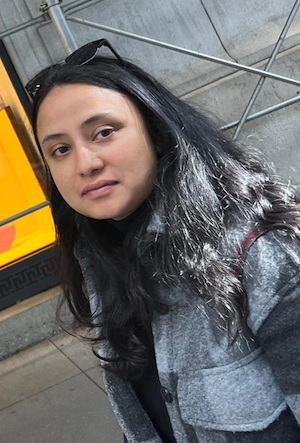
Fulbright Postdoctoral Fellow, Department of Entomology
University of Maryland
Dr. Shweta Basnett is a Fulbright Postdoctoral Fellow at the Entomology Department, University of Maryland (UMD). She obtained her Ph.D. in the ecology and evolution of the Eastern Himalayan economically important flowering plant genus, Rhododendron, from Ashoka Trust for Research in Ecology and Evolution, India. Her current research in UMD studies the effect of changes in the biotic and abiotic environment on the evolutionary history of mountain endemic plant-pollinator interactions using a comparative approach by integrating molecular phylogenies, geospatial analyses, and ecological studies. Through this integrated eco-evolutionary context, she will shed light on the interplay between climatic niche preference and evolution, floral variation, and pollinator choice in the evolution of the genus Rhododendron, which is widely distributed in the mountainous regions of North America, Asia, and Europe from 65°N to 20°S. Importantly, this comparative approach will integrate evolutionary concepts into identifying future changes in Rhododendron species distributions, contributing to detecting conservation priorities in the face of climate change.
2. Dr. Rhiana Bokhari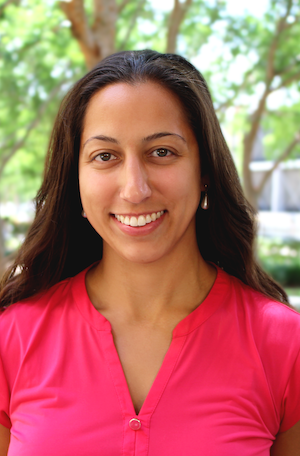
Scientific Program Manager
Translational Research Institute for Space Health
Rihana Bokhari is a scientific program manager for the Translational Research Institute for Space Health, a Cooperative Agreement with NASA that focuses on applied space health research and funds disruptive, high impact scientific studies. Rihana has been working for NASA by supporting scientific peer review and program management for 3 years. Before working for NASA, she studied radiation and simulated microgravity effects on bone in her doctoral studies.
3. Dr. Michelle Brooks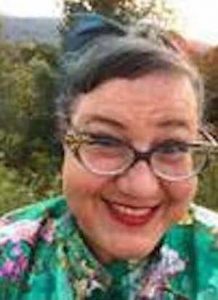
Adjunct Staff Member, National Center for Earth and Space Science Education
Senior Management, Office of Professional Training
American Chemical Society
Michelle Brooks is a Senior Manager at the American Chemical Society where she manages the ACS Approval Program for undergraduate chemistry departments. Michelle received her Bachelor’s degree in biochemistry from Eastern Michigan University and her Ph.D. in biophysical chemistry from Michigan State University where she studied the molecular orbital structure of radicals involved in photosynthetic processes by using electron magnetic resonance spectroscopy. As an NIH postdoctoral fellow at Columbia University, she studied chemically induced dynamic polarization by using solid state NMR. Michelle started her scientific career in academia, where she taught students to love pchem, but when an opportunity to develop and manage a graduate program in biology arose, she moved to administration and eventually found her way back to undergraduate education and chemistry at the ACS. As an administrator and manager, her passions lie in developing processes, creating assessment tools, and finding new ways to accomplish old tasks.
4. Dr. James Churchill
Senior Advisor
National Institute of Mental Health
Dr. James Churchill serves as Senior Advisor to the Director at the National Institute of Mental Health (NIMH). Dr. Churchill is a neuroscientist and has conducted research evaluating the anatomical and physiological basis of learning and memory. During his tenure at the NIMH, Dr. Churchill has managed a variety of projects from supporting young investigators to managing BRAIN Initiative efforts in the areas of next generation human brain imaging and neuroethics to the coordinating interagency research on suicide.
5. 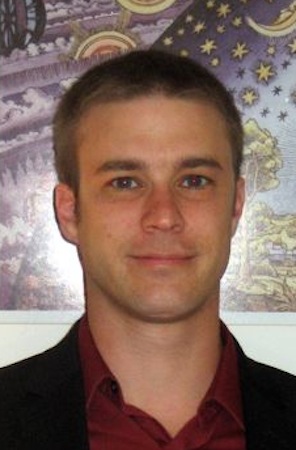 Dr. Dan Crooks
Dr. Dan Crooks
Postdoctoral Fellow, National Cancer Institute
National Institutes of Health
Dan Crooks studies kidney cancer metabolism at the NCI Urologic Oncology Branch in the NIH Clinical Center, with the goal of identifying novel metabolic pathways that can be targeted by therapeutics in the clinic. Dan completed a B.A. in Molecular Biology and an M.S. in Environmental Toxicology at the University of California at Santa Cruz, and earned a Ph.D. in Biochemistry from Georgetown University while performing research at the NIH on cellular iron metabolism in developing red blood cells and in mitochondrial myopathy patients. His long-term research interests lie in developing new metabolic techniques to study altered cellular metabolism and tissue specificity in human diseases.
6. Dr. Douglas Dluzen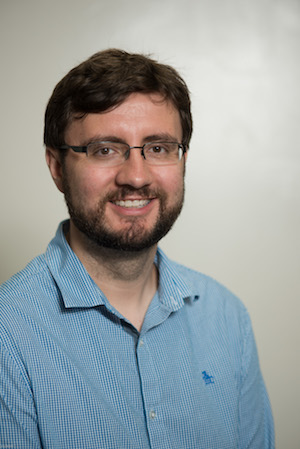
Assistant Professor, Biology Department
Morgan State University
Douglas Dluzen is an Assistant Professor of Biology at Morgan State University. His laboratory is focused on the intersection of human health disparities, aging, and the environment. He is interested in identifying biological and socioeconomic factors that influence health disparities in the community and their impact on healthy aging and age-related diseases. Doug primarily studies the role of non-coding RNAs in the biology of these mechanisms contributes to cardiovascular disease disparities in Baltimore City. He earned his B.S. in Molecular and Cellular Biology from the University of Illinois at Urbana-Champaign and Ph.D. in Genetics from the Pennsylvania State University Hershey College of Medicine. He was a post-doctoral research fellow at the National Institute on Aging. He teaching evolutionary biology, genetics, and environmental biotechnology to students at Morgan State. In his free time he writes science fiction and non-fiction, and his work can be found in Clarkesworld Magazine and Analog Science Fiction and Fact.
7. Dr. José Feijó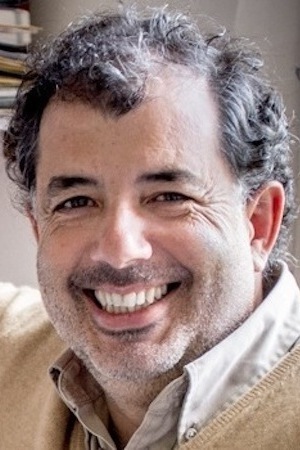
Professor, Department of Cell Biology and Molecular Genetics
University of Maryland
José is a Professor at the University of Maryland. He is a Plant Cell Biologist, focusing on reproduction and using the male gametophyte of plants as a model system to understand the fundamental properties of cellular growth, morphogenesis, and cell to cell communication. José uses a combination of live imaging, electrophysiology and genetics tools, and interfaces with biophysics by developing mathematical and computational models. He has been involved in a number of major initiatives for science vulgarization, including being the curator of one of the world largest exhibitions organized to commemorate Darwin’s bicentenary (“Darwin’s Evolution”) with the Gulbenkian Foundation, which included collaborations with the Natural History Museums of New York, London, Madrid, Paris, Berlin, etc. The exhibition toured 6 venues in 3 countries reaching close to 0.5 million visitors. He was a founding member and editor for Biology of “Casa das Ciencias”, a web portal dedicated to science educators and students in Portuguese (casadasciencias.org), which sponsors the adaptation of education materials to Portuguese, and publishes original educational materials. José has organized international courses and workshops on live imaging and Plant Development, and is involved in teaching plant biology and microscopy in the first BioMedical Ph.D. program in Portuguese speaking Africa, taking place at the University of Cape Verde.
8. Dr. Dionysis Foustoukos
Experimental Geochemist, Geophysical Laboratory
Carnegie Institution of Washington
Dionysis is an experimental geochemist studying the evolution of geofluids in a wide range of natural environments. His research activities focus mainly on the evolution of submarine volcanoes; the habitability of deep-sea extreme environments; and the geochemical interactions between Earth’s upper mantle, crust and oceans. He develops novel experimental designs to investigate natural processes under controlled laboratory conditions, and he has been involved in oceanographic expeditions at the Pacific Ocean and the Mediterranean Sea.
9. Dr. Talita B. Gagliardi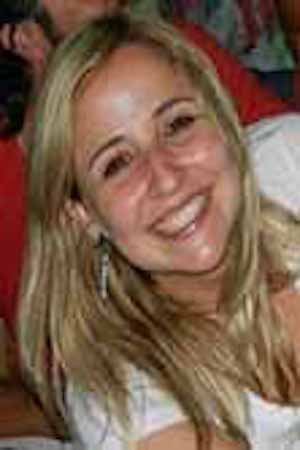
Research Assistant, Department of Cell Biology and Molecular Genetics
University of Maryland, College Park
Talita B. Gagliardi is Research Assistant at the University of Maryland (UMD). She is Bachelor in Biomedical Science and Specialist in Clinical Analysis; and obtained her PhD in Molecular and Cell Biology & Microbiology from University of São Paulo (SP, Brazil) in 2012. She worked as Postdoctoral Fellow in University of São Paulo (SP, Brazil; 2012-2016) and in Columbia University (NY, USA; 2013). Recently, she has been conducting studies about human rhinoviruses and human influeza virus together with Dr. Margaret Scull’s group. Talita’s interests are studying about human respiratory viruses regarding their replication; the effect of virus variability to the immune response; pathogenesis of viral infection; search for potential antiviral targets and vaccine production. She always looks forward to expand her contribution to Virology area, as collaborating in studies about animal viruses; and also in educational area.
10. Dr. Dionna Gamble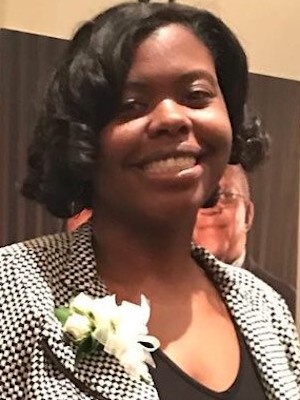
Postdoctoral Fellow, National Cancer Institute (NCI)
National Institutes of Health (NIH)
Dionna Gamble is a postdoctoral fellow studying the genetics of kidney cancer in the NCI Urologic Oncology Branch at the NIH Clinical Center. Her work uses molecular biology and genetic/genomic approaches to investigate different subtypes of kidney cancer with the goal of identifying novel therapeutic targets. Dionna completed a B.S. in Biological Sciences from the University of Maryland Baltimore County where she was a member of the Meyerhoff Scholars Program. She then earned her Ph.D. in Genetics and Genomics from Duke University, where she used the awesome power of yeast genetics to study DNA damage and repair.
11. Dr. Jason Gavenonis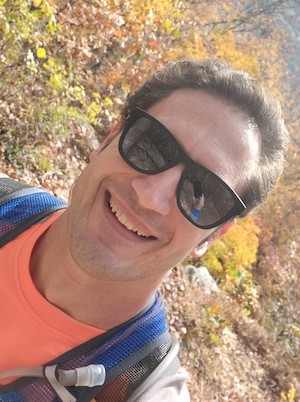
Program Manager, Faculty Professional Development
American Chemical Society
Jason Gavenonis is a program manager at the American Chemical Society, using his experience as a former small-college professor to run career development programming for chemistry faculty. Prior to the start of his independent career, with research interests running from organometallic catalysis to protein-protein interaction inhibition, he received a B.A. in chemistry from the University of Pennsylvania, a Ph.D. from Boston College, and was an NIH-IRACDA postdoctoral fellow at Tufts. When not chasing his eight-year-old twins short distances, he enjoys running long distances, preferably in the woods.
12. Theresa M. Geiman, Ph.D.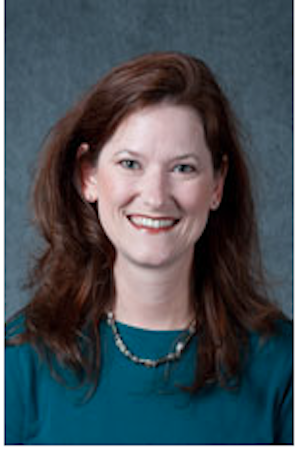
Assistant Professor, Department of Biology
Loyola University Maryland
Dr. Geiman completed her undergraduate studies in Biochemistry from McDaniel College, followed by a Ph.D. in Molecular and Cellular Oncology from The George Washington University. She performed her thesis research at the National Cancer Institute-Frederick, generating and characterizing a knockout mouse model of the Lsh/Hells chromatin remodeling gene. She continued her research training with postdoctoral fellowships at the National Institute of Child Health and Human Development and the National Cancer Institute at NIH. Her research focuses on studying proteins involved in epigenetic mechanisms such as DNA methylation, chromatin remodeling, and histone modifications through the use of in vitro cell culture and in vivo mouse models. Of particular interest is the study of how altering the expression of these epigenetic genes, and therefore the packaging of the cellular DNA, is involved in the processes of early mammalian development, cellular differentiation, and cancer. In addition to her research, Dr. Geiman is also involved in programs to encourage students to pursue careers in biomedical research, as well as those that enhance training for students interested in careers in cancer research.
13. Dr. Matt Giorgianni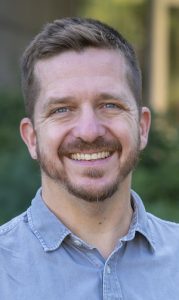
Assistant Research Scientist, Department of Biology
University of Maryland
Matt Giorgianni is an Assistant Research Professor at the University of Maryland where he studies evolution in the venom genes of viperid snakes. Matt obtained his B.S. in Biology at the University of Oregon before moving to the University of Chicago for his Ph.D. in Evolutionary and Developmental Biology. He went on to do postdoctoral work at Columbia University and the University of Wisconsin, Madison, before moving to Maryland. Matt’s research has used Molecular Biology, Embryology, Genetics, and Genomics and a wide array of systems, including Zebrafish, frogs, fuitflies, beetles, crustaceans and snakes, all with the goal of understanding how Evolution works.
14. Benjamin Goodman, Ph.D.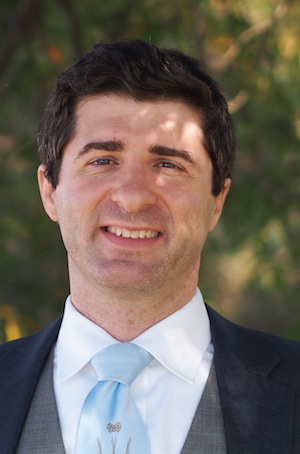
Senior Scientist
NASA Research and Education Support Services
Ben Goodman is a peer review administrator for NASA whose work currently focuses on programs spanning the Human Exploration and Operations Mission Directorate, Science Mission Directorate, and the Space Technology Mission Directorate. He has been a peer review administrator for nine years, and has gained a familiarity with a wide variety of NASA programs and research portfolios while recruiting and serving as referee for many panels and solicitations, especially those dealing with NASA life sciences programs. Before working for NASA, he performed research on mitotic spindle assembly in Xenopus and cell culture while at Johns Hopkins University, where he received his Ph.D. in Cell Biology, and also served as a post-doctoral researcher at the NIH where he worked on microtubule post-translational modifications.
15. Mr. John Hamel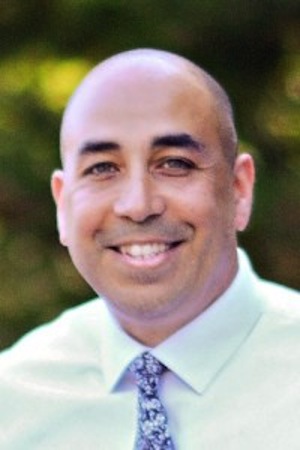
Flight Operations Manager, Student Spaceflight Experiments Program (SSEP)
Education Program Manager, National Center for Earth and Space Science Education (NCESSE)
John is the Education Program Manager at the National Center for Earth and Space Science Education. He provides logistics and coordination support for NCESSE’s various programs, including SSEP, Family Science Night and Voyage. As the SSEP Flight Operations Manager, John provides logistics support for all phases of flight operations, as well as website content development, coordination support for the annual SSEP National Conference, organization of SSEP delegations attending a mission launch, and overseeing the Mission Patch design competitions for each SSEP Mission. John also has extensive experience with non-profit education organizations and a certified association management group. He spent the early years of his career working directly with pre-school and school-aged children.
16. Ms. Stacy Hamel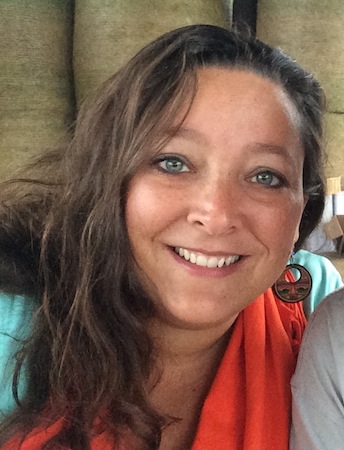
Senior Flight Operations Manager, Student Spaceflight Experiments Program (SSEP)
Senior Education Program Manager, National Center for Earth and Space Science Education (NCESSE)
Stacy Hamel is the Senior Education Program Manager for the National Center for Earth and Space Science Education, and also serves as the Senior Flight Operations Manager for the Student Spaceflight Experiments Program (SSEP). As the Senior Flight Operations Manager, Stacy oversees all aspects of SSEP from the microgravity experiment design and proposal competition phase, to proposal review and selection, experiment refinement and validation for flight, launch, on-orbit operations, and experiment return to Earth for harvesting and analysis. In this capacity she also serves as the liaison to NanoRacks on all flight experiments and issues associated with NASA flight safety review. Stacy manages SSEP international participation through the Arthur C. Clarke Institute for Space Education. She oversees the Flight Operations team, including Flight Operations Managers and Coordinators.
17. Dr. Susan Harbison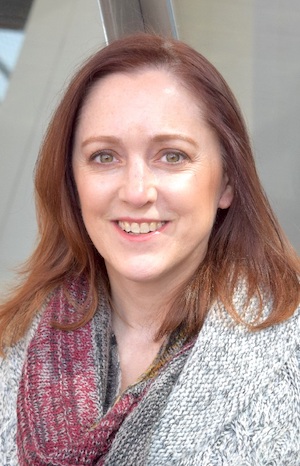
Senior Investigator, Laboratory of Systems Genetics
Systems Biology Center, National Heart Lung and Blood Institute
Susan T. Harbison, Ph.D., is a Senior Investigator at the National Heart, Lung, and Blood
Institute. The goal of her research is to understand the role of genomic variation in sleep andcircadian rhythms. Her lab applies systems genetics and CRISPR transgenic approaches to the model organism Drosophila melanogaster in order to reveal the genetic networks underlying these behaviors. Current work focuses on the manner in which the genes in these networks interact with one another, how they respond to environmental perturbations, and to what degree they have been conserved across species—from flies to humans. Dr. Harbison obtained her Ph.D. from North Carolina State University in quantitative genetics and completed postdoctoral training at N. C. State and at the University of Pennsylvania.
18. Dr. Vincent Holahan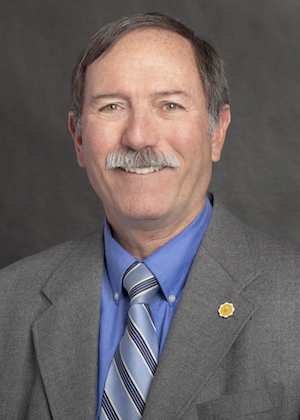
Senior Level Advisor for Health Physics
U.S. Nuclear Regulatory Commission
Dr. Holahan is responsible for developing technical standards for issuing federal regulations and guidance to possess and use radioactive materials by academic, industrial and medical licensees. His specific research interest is public and occupational health and developing guidance to limit occupational and public exposure to ionizing radiation during routine and emergency situations. He also is the current U.S. Representative to the United Nations Scientific Committee on the Effects of Atomic Radiation. Before joining the Nuclear Regulatory Commission in 1996, he was a senior program officer to the Board of Army Science and Technology at the U.S. National Research Council/National Academies of Science. Dr. Holahan completed 35 years of active and reserve service in the U.S. Army as nuclear medical sciences officer. His military research interests include the study of both ionizing and non-ionizing radiation and its impact on military performance. Dr. Holahan received a Bachelor of Arts degree in chemistry and a Bachelor of Sciences degree in biology from Gonzaga University. He received his doctoral degree in Radiology and Radiation Biology and an interdisciplinary degree in Cellular and Molecular Biology from Colorado State University. His graduate research interests include the combined use of heat and ionizing radiation as a new modality for cancer treatment.
19. Mr. Mike Hulslander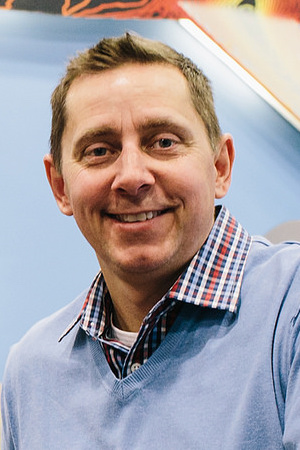
Adjunct Space Science Educator, National Center for Earth and Space Science Education
Manager of Onsite Learning, Smithsonian National Air and Space Museum
Mike is responsible for STEM education in the Museum’s How Things Fly gallery, which teaches visitors about the science of flight. Mike is also very involved in exhibition development at the Museum. Mike has worked in museums and zoos for more than 29 years, researching, writing, presenting and evaluating STEM programs for school groups, educators, families, and the general public.
20. Dr. Sanjeed Jafar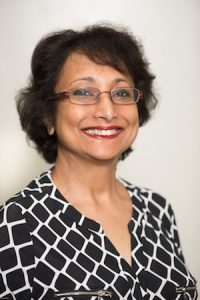
Assistant Professor, Medical Laboratory Science
Morgan State University
Dr. Jafar studied Medicine in Bangladesh and worked at the International Centre for Diarrhoeal Diseases, Research (ICDDR,B) before pursuing graduate studies on rotaviral research at Baylor College of Medicine (BCM) in Houston, Texas. She obtained Ph.D. in 1995 and worked on SV40 viruses during her post doctoral fellowship at BCM. Currently, Dr. Jafar is an Assistant Professor of Medical Laboratory Science at Morgan State University.
21. Andrea Jones
Public Engagement Lead, Solar System Exploration Division
NASA Goddard Space Flight Center
Andrea Jones is a planetary geologist and the Public Engagement Lead of the Solar System Exploration Division at NASA’s Goddard Space Flight Center. She shares NASA planetary science research and discoveries with audiences around the country and the world. Andrea is the Public Engagement Lead for NASA’s Lunar Reconnaissance Orbiter, the Sample Analysis at Mars instrument suite onboard the Mars Science Laboratory Curiosity rover, and a member of two teams in NASA’s Solar System Exploration Research Virtual Institute. Andrea is the Planetary Science Lead of Earth to Sky, a partnership between NASA, the National Park Service, and the US Fish & Wildlife Service, and Director of International Observe the Moon Night, an annual worldwide celebration of lunar and planetary science as well as our personal and cultural connections to the Moon.
22. Dr. Beatrice Kondo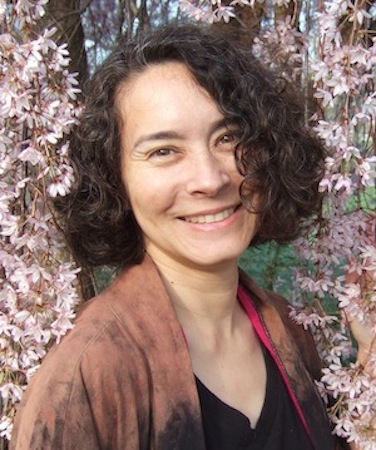
Assistant Program Director/Senior Lecturer, Center for Biotechnology Education
The Johns Hopkins University, Krieger School of Arts & Sciences
Dr. Kondo’s undergraduate studies were at Loyola University in Baltimore. She then began a career in software test engineering, testing Hubble Space Telescope management and control software, before transitioning to the private sector, testing communications systems. Eventually the siren song of higher education lured her to a return into academia, and she completed a doctorate in Biological Sciences at the University of Maryland, Baltimore County in 2006. Her publications are in the area of molecular phylogenetics, with a special emphasis on closely-related species and the evolution of migration in New World Orioles. Recognizing a love of teaching during her graduate career, Dr. Kondo pursued a teaching post-doc at Cornell College in Iowa, famous for its unusual one-course-at-a-time curriculum. After this, she taught for four years in the undergraduate program of the Department of Biology at The Johns Hopkins University, before joining the Advanced Academic Programs, Center for Biotechnology Education at Johns Hopkins in Fall 2011. She serves as Asst. Program Director for the MS in Biotechnology as well as for the Post-master’s Certificate in Sequence Analysis and Genomics. Class she teaches in include Personalized Medicine and Genomics, Comparative Animal Physiology, and Advanced Cell Biology.
23. Dr. Daniel Larson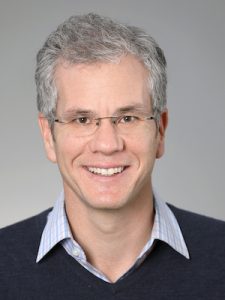
Senior Investigator
National Cancer Institute
The primary goal of Dan Larson’s laboratory at the National Cancer Institute is to understand gene expression in eukaryotic cells, starting from the mechanistic behavior of individual macromolecules and proceeding to their regulation in cells and tissue. The laboratory utilizes a battery of biophysical, molecular and genomic approaches, including single-molecule microscopy, RNA visualization in fixed and living cells, computational modeling of gene regulation, and nascent RNA sequencing. Dr. Larson helped pioneer in vivo single-molecule studies of transcription and splicing. Dr. Larson was trained in biophysics, molecular biology and cell biology, receiving a B.S. in physics from the Ohio State University, a Ph.D. in biophysics from Cornell University, and completing postdoctoral training in molecular and cell biology at Albert Einstein College of Medicine. He has never been to space.
24. Dr. Jeff Leips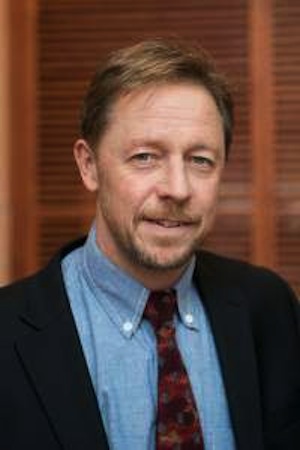
Professor, Department of Biological Sciences
University of Maryland Baltimore County
Dr. Leips obtained his PhD from Florida State University in the field of evolutionary ecology and did his post doctoral research at NC State University in quantitative genetics. Research in the Leips lab is focused on understanding the genetic basis of aging using the fruit fly, Drosophila melanogaster, as a model organism. Research interests include identifying genes that control age-specific changes in traits that directly contribute to senescence and ultimately limit life span. These traits include age-specific reproduction, immune response and energy storage. Some members of the research group are also studying the ecology of natural populations of Drosophila to understand how natural selection acts on genes controlling these traits. The overall goal is to combine knowledge of the natural history of this species with an understanding of the genetic architecture of these traits to help explain the maintenance of genetic variation in age-related changes in fitness in natural populations. For more information on research in the Leips lab follow this link: http://biology.umbc.edu/directory/faculty/leips/leips-lab/
25. Dr. Yuejin Li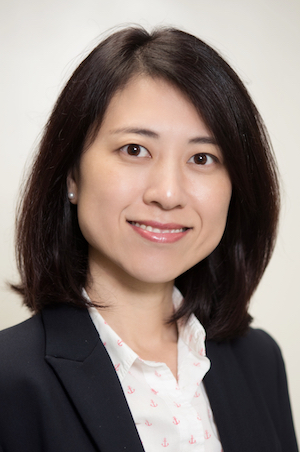
Assistant Professor, Department of Biology
Morgan State University
Dr. Yuejin Li is Assistant Professor of Biology at Morgan State University. Dr. Li received her M.D. from China Medical University and Ph.D. in Integrative Biology from Florida Atlantic University, and completed her postdoctoral training at Johns Hopkins University School of Medicine. Research projects in her lab focus on the mechanisms underlying heart muscle dysfunction in heart diseases, including cardiomyopathies, ischemic-reperfusion injury, and cardiac toxicity of cancer treatment. The primary function of heart is to pump out blood in order to supply oxygen and nutrients to different parts of the body. Sarcomere is the basic contractile unit of the striated muscle (both skeletal and heart muscle). Any alternation of sarcomeric protein may potentially affect heart function. Recent study on heart tissue of heart failure patients revealed several novel post-translational modification sites on sarcomeric proteins. Currently, Dr. Li’s lab uses recombinant proteins, isolated muscle and mouse model to study whether and how modifications to those novel sites affect heart function in normal and diseased conditions.
26. Dr. Tim Livengood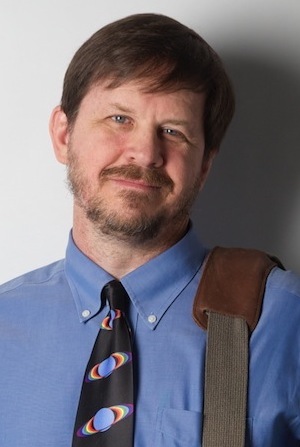
Adjunct Space Science Researcher, National Center for Earth and Space Science Education (NCESSE)
Research Scientist, University of Maryland Department of Astronomy
Dr. Tim Livengood is a senior advisor to SSEP and adjunct research scientist with the National Center for Earth and Space Science Education. He is a research scientist with the University of Maryland Department of Astronomy and works at NASA’s Goddard Space Flight Center. Tim has been a presenter and team leader for the Center’s public and school programs and has visited hundreds of classrooms. His current research uses a neutron-detecting instrument on the Lunar Reconnaissance Orbiter to measure deposits of water on the Moon, and uses infrared spectroscopy from telescopes on Earth to measure composition, temperature, and wind velocity in the atmospheres of other planets.
27. Marguerite Matthews, PhD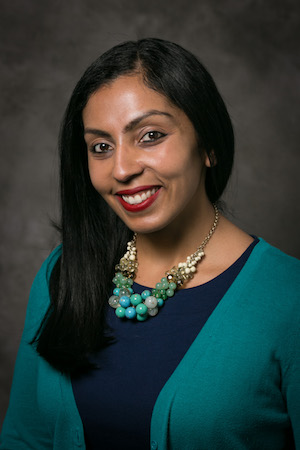
Health Program Specialist, Office of Programs to Enhance Neuroscience Workforce Diversity
National Institute of Neurological Disorders and Stroke
Marguerite Matthews, PhD is a health program specialist in the Office of Programs to Enhance Neuroscience Workforce Diversity at the National Institute of Neurological Disorders and Stroke (NINDS). As a program specialist, Dr. Matthews supports NINDS diversity efforts and programs that provide neuroscience research training and career development for students and early career neuroscientists. Prior to NINDS, she was a 2016-2018 AAAS Science & Technology Policy Fellow in the Office of the Director of the National Institutes of Health. Dr. Matthews received her BS in biochemistry from Spelman College and her PhD in neuroscience from the University of Pittsburgh. She completed her postdoctoral fellowship in behavioral neuroscience at the Oregon Health & Science University.
28. Mr. Orville Mayberry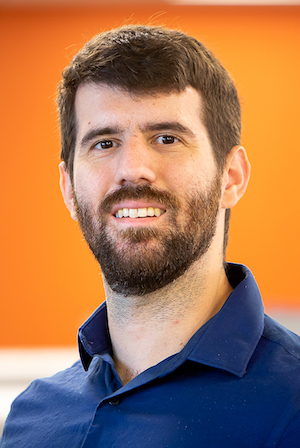
R&D Scientist II
Becton, Dickinson and Company
Ory received his BS in genetics from the University of Georgia and MA in biology from Johns Hopkins University. He worked for four years as a public health scientist at the Maryland Department of Health, Division of Newborn and Childhood Screening testing every baby born in Maryland for a large panel of hereditary and metabolic disorders including sickle cell anemia, cystic fibrosis, and galactosemia. He is now a molecular R&D scientist at BD working in in vitro diagnostics assay development. The most recently announced assay he has worked on is the Respiratory Viral Panel for the fully automated BD MAX platform capable of testing for SARS-CoV-2, Flu A, Flu B, and respiratory syncytial virus (RSV) all from the same patient swab. Outside of work, he enjoys time with his parrots, snakes, and carnivorous plants, playing board games, and scuba diving.
29. Dr. Sally Moody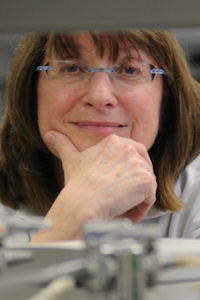
Professor and Chair of Anatomy and Cell Biology
School of Medical and Health Sciences
George Washington University
Dr. Moody has directed a biomedical research laboratory focused on the development of the nervous system for over 30 years. She received her MS. in Anatomy from the University of Maryland and her Ph.D. in Neuroscience from the University of Florida. After postdoctoral studies in the Department of Neurobiology at the University of Utah, she attained a faculty position in the Department of Anatomy and Cell Biology at the University of Virginia. Later, she moved to the George Washington University to direct the Neuroscience Program, where she rose through the ranks to full Professor and departmental chair. Her laboratory has studied numerous aspects of neural cell development in a number of animal models. Her favorite, however, is the frog Xenopus because of they have very large eggs and develop rapidly. This makes is fairly easy to perform gene gain- and loss-of-function assays in specific embryonic tissues. The information we gain from Xenopus embryos is highly applicable to other vertebrates, including humans, due to a high degree of genetic conservation. The major project being carried out in Dr. Moody’s laboratory is focused on identifying novel genes that contribute to craniofacial and hearing loss birth defects. We are studying the function of genes that are required for the proper formation of the sensory organs of the head. In chickens, frogs, fish, mice and humans, there is abundant experimental evidence that the Six1 transcription factor is pivotal in the development of these organs. Furthermore, mutations in SIX1 lead to birth defects that cause malformations in these structures. We are identifying new genes that interact with Six1 in order to discover their function during normal development as well as in causing human birth defects.
30. Dr. Tammatha O’Brien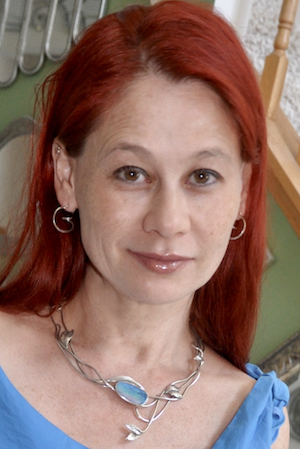
Director of The Master of Professional Studies in Applied Entomology program and Principal Lecturer, Department of Entomology, CMNS
University of Maryland, College Park
Tammatha earned her PhD in entomology from the University of Maryland with an emphasis on tritrophic interactions amongst entomopathogenic fungus, insects, and plants. Her research examined gene expression patterns based on changing environmental conditions. She is currently interested in sciences education and best practices for curriculum development.
31. Travis O’Brien, Ph.D., M.Ed.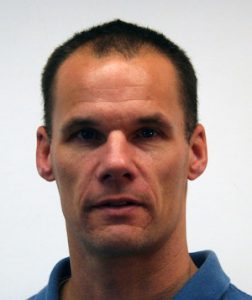
Associate Professor, Department of Pharmacology and Physiology
George Washington University Medical Center
Dr. O’Brien has been involved in education at the undergraduate, graduate and professional level for 20 years. He directs the Physician Assistant Program and graduate pharmacology courses at the GWU School of Medicine and Health Sciences. He is also the co-director of the Reproductive Medicine and Endocrinology course in the GWU MD program and provides numerous lectures throughout the other courses in the MD curriculum. Dr. O’Brien also directs the graduate course in pharmacogenomics and personalized medicine and has authored numerous publications on the topic. His research is focused on translational medicine and the development of predictive pharmacogenomic/toxicogenomic biomarkers in minority populations.
32. Dr. Julia Omotade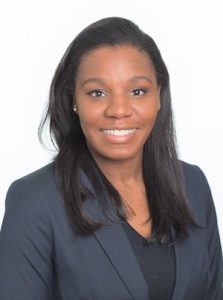
Senior Science Policy Specialist
Association of American Medical Colleges
Julia Omotade is a cellular and molecular neuroscientist who is proud of being a scientist ‘beyond the bench’. Julia received her PhD from Emory University, where she used advanced microscopy to investigate mammalian brain development. After a 10-year career in research, Julia transitioned to healthcare consulting and recruiting, where she worked with organizations such as The National Academies of Science, Engineering and Medicine; The Association for Women in Science; and the Broad Institute – placing leaders at the right time to drive discovery, health, and care. Julia is currently a Senior Science Policy Specialist at the Association of American Medical Colleges (AAMC), where she tackles our nation’s biomedical policy issues. Her portfolio includes scientific training and workforce; diversity, equity and inclusion of the US biomedical workforce; sexual harassment in science and; gender equity and parity in science; new, national and regional research initiatives; coronavirus research and COVID-19. Julia is passionate about (intersectional) gender equity, the global education of girls and women, and science communication.
33. Dr. Saroj Pramanik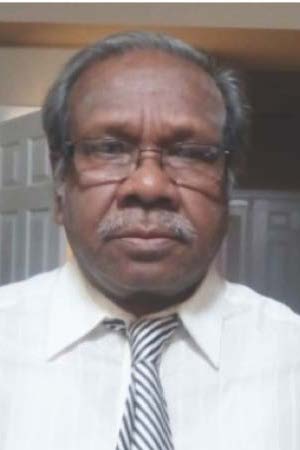
Associate Professor, Department Biology
Morgan State University
Dr. Pramanik’s research uses wide varieties of Biological Systems and several molecular tools. His primary area of research interest is Regulation of Protein Synthesis during Cellular Differentiation. He isolated couple of unique cDNA clones which are published in peer reviewed journals. His Alfalfa Ubiquitin Carrier Protein (E2) is in the MyBiosource Com catalogue (# MBS 1093121). Dr. Pramanik’s other research interest is on somatic embryogenesis of plants. Any segment of the plant can be induced to generate an embryo, which are as good as a normal seed. This technique is known as artificial embryos. At Morgan State University, Dr. Pramanik’s lab is working on Bioremediation of Toxic Chlorinated Chemicals (PCBs, Triclosan, DDT, etc.) using Nano-Phytotechnology and Plant-Microbial Interactions and on Rhenium-based Anticancer Drug Development (with collaboration). Dr. Pramanik received his bachelors’ degree in Agriculture (BCKV, WB, India), MS and Ph.D in Biochemistry (Indian Agricultural Research Institute, New Delhi, India), and postdoctoral research work on Myoblast Differentiation at Memorial University of Newfoundland, and Somatic Embryogenesis of Alfalfa plant at University of Guelph, Canada.
34. Courtney J. Robinson, Ph.D.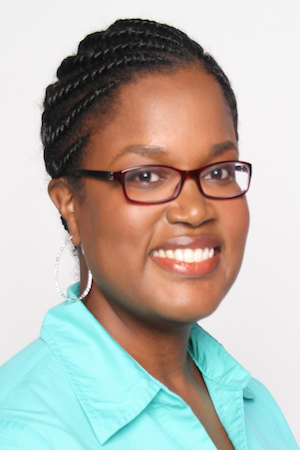
Associate Professor of Biology
Howard University
Courtney J. Robinson is an Associate Professor of Biology at Howard University. She earned a B.S. in Microbiology from Xavier University of Louisiana, and a Ph.D. in Microbiology from the University of Wisconsin – Madison. From 2008-2011 she was a postdoctoral fellow at the University of Michigan – Ann Arbor. Her research explores the role of the gut microbiota in insect health and transmission of disease, as well as microbial communities associated with abiotic hosts. She is the director of the Science Education Alliance – Phage Hunters Advancing Genomics and Evolutionary Science course at Howard. Courtney is also the recipient of two subcontracts from the Department of Energy, through which Howard students conduct research in collaboration with Pacific Northwest National Laboratory. As co-PI of the NSF-funded Howard University Science Teacher Certification Program, she also is helping to develop a program to certify Biology and Chemistry majors to teach science in DC Public Schools.
35. J. Reid Schwebach, Ph.D., Ed.M.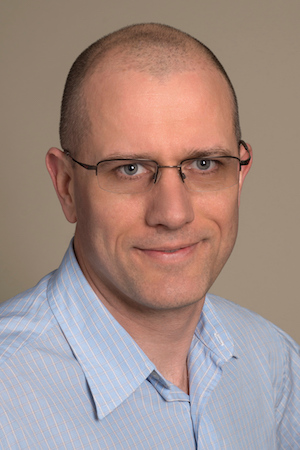
Project Director, Research Competitiveness Program (RCP)
American Association for the Advancement of Science (AAAS)
Dr. Schwebach is an RCP Project Director at AAAS. He is currently working on and developing projects that provide essential advisory and support work, proposal review, and infrastructure assessment for RCP. He received his PhD in microbiology and immunology from the Albert Einstein College of Medicine. He holds Ed.M. (secondary science education) and M.A. (international education development) degrees from Teachers College, Columbia University. He has a BA in agriculture and a BS in biochemistry from New Mexico State University. Before coming to AAAS, Reid was a Program Manager, Coordinator, and Assistant Professor for the College of Science at George Mason University, from 2010-2018. At Mason, he helped develop a new undergraduate curriculum in bioinformatics, was the founding coordinator of the Governor’s School @ Innovation Park, taught phage ecology undergraduate research, and was involved with several NSF projects. Before Mason, he worked for the Board on Science Education at The National Research Council. From 2007-2008, he was an American Association for the Advancement of Science sponsored Science and Technology Policy Fellow at the National Science Foundation, in The Division of Research and Learning. In the NYC public school system, he taught high school chemistry and independent student research at The Beacon School. His scientific research focused on the immunology of M. tuberculosis, the bacterial pathogen that causes tuberculosis.
36. Dr. Margaret Scull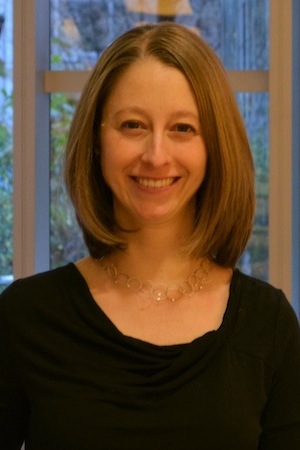
Assistant Professor, Department of Cell Biology and Molecular Genetics
University of Maryland, College Park
Margaret Scull obtained her Ph.D. in Microbiology and Immunology from the University of North Carolina at Chapel Hill in 2009. After completing her post- doctoral research at the Rockefeller University, she joined the faculty at the University of Maryland – College Park as an Assistant Professor. Dr. Scull’s lab works at the interface of virology and cell biology. Specifically, her research focuses on virus-host interactions in the airway epithelium – the primary target for infection by influenza virus and other clinically relevant respiratory viruses. Her research uses a variety of tools, including microscopy, deep sequencing technology, viral genetics, and in vitro primary cell model systems to understand mechanisms of host restriction and innate defense against viral infection. In addition to her work in the lab, Dr. Scull has been active in science education Outreach, including after school mentoring in STEM education and volunteering as both an educator on the BioBus mobile laboratory and as a judge at science fair competitions in the New York City area.
37. Dr. Nick Shworak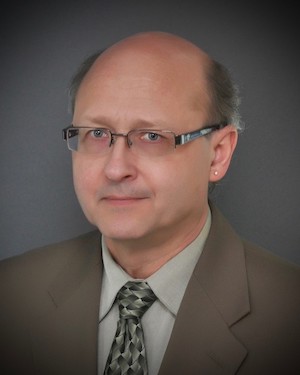
Associate Professor, Department of Pharmacology and Physiology
School of Medicine and Health Sciences, The George Washington University
Dr. Shworak is an Associate Professor of Pharmacology & Physiology and a Medical Educator of the School of Medicine and Health Sciences, The George Washington University (DC). His degrees are: BSc (Zoology, 1981; University of Calgary, AB, Canada), MD (1985; University of Edmonton, AB), PhD (Molecular Biology, 1990; University of Calgary), and MA Ed (2022; The George Washington University). For almost 30 years, he has studied the roles of polysaccharides in health and disease in a variety of disciplines including cardiology, neurology, virology, as well as developmental and reproductive biology. Much of his biomedical research was conducted at Massachusetts Institute of Technology, Harvard University, and Dartmouth College. Most recently Dr. Shworak has identified a gene that protects against inflammatory disorders and may be a genetic risk factor for coronary artery disease. He teaches pre-clerkship sciences to medical, physician assistant, and graduate students.
38. Dr. Julia Slocomb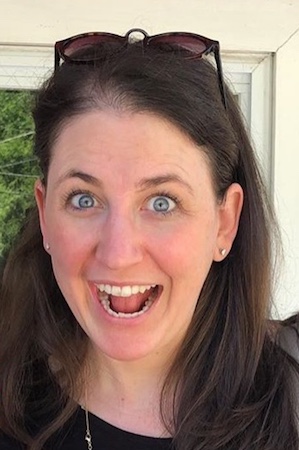
Lead Reviewer/Neuroscientist, Center for Devices and Radiological Health
Food and Drug Administration
Julia earned her B.S. in Biology with a minor in English Literature from Villanova University and her Ph.D. from the Cellular, Molecular, Developmental Biology and Biophysics program at Johns Hopkins University. Her dissertation focused on the neuronal circuits that drive survival behaviors, such as feeding. Between her undergraduate and graduate degrees, Julia spent 5 years managing interdisciplinary clinical research studies for the Pennsylvania State University College of Medicine’s Department of Neurology. As a lead reviewer at the FDA, Julia reviews neurological and physical medicine devices for safety and effectiveness. She also writes new medical device regulation and is involved in the development of standards in Brain-Computer Interfacing devices. In her spare time she works as an editor of science fiction and fact articles to help bring cutting edge science to the public.
39. Dr. Michelle Starz-Gaiano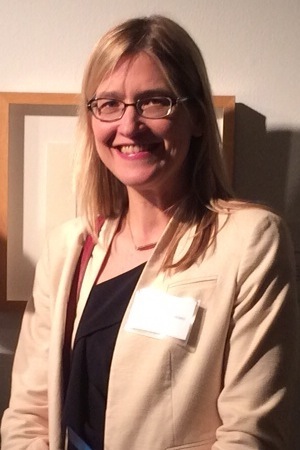
Adjunct Staff Member, National Center for Earth and Space Science Education
Associate Professor, Department of Biological Sciences
University of Maryland Baltimore County
Dr. Starz-Gaiano investigates the genetic control of animal development. In particular, her studies focus on understanding how cells adopt different identities and move through complex environments. She uses the vast genetic tools developed in fruit flies to identify new molecules involved in these processes. Interestingly, many of the same genes that regulate development in flies are required in the development of other animals, including humans. Currently, much of the work from her research group focuses on the regulation of the Janus Kinase and STAT molecular signaling pathway. Dr. Starz-Gaiano earned a bachelor’s degree from MIT, a PhD from NYU, and completed postdoctoral work at Johns Hopkins Medical School before starting at UMBC in 2008.
40. Dr. Pushpa Tandon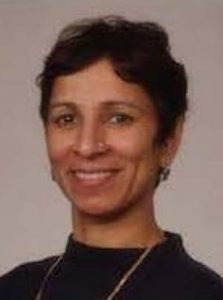
Program Director, Cancer Imaging Program
National Cancer Institute
Dr. Pushpa Tandon received her Master’s in Biochemistry and her Ph.D. in Neurochemistry, from the University of Lucknow, India. Dr. Tandon is currently a Program Director, within the Cancer Imaging Program, and the Administrative Deputy Director, of the Quantitative Imaging Network, an international Network for development of quantitative imaging tools for prediction of tumor response to treatment, at the National Cancer Institute, Maryland, USA. She has been working in the field of Cancer Imaging for over 25 years and has developed and manages several international programs and collaborations around the world. She was involved with the establishment of low cost, point-of-care technologies for cancer program at NCI and currently manages several of the international project under it . She has been a mentor to several Ph.D students and enjoys working with students at all levels. Her main interests are cancer imaging, cancer biomarkers, inflammation and nanotechnology. Dr. Tandon is interested in the holistic approach to medicine. She was awarded the United States Embassy Science fellowship in summer 2018 to develop a bilateral Indo-US bilateral program on Indian Traditional medicine and cancer. She has published over 50 peer review articles and several book chapters.
41. Alex Theos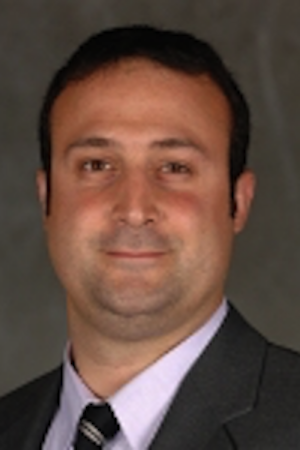
Adjunct Staff Member, National Center for Earth and Space Science Education
Associate Professor
Georgetown University
Alex Theos is an Associate Professor at the Department of Human Science in the School of Nursing And Health Studies at Georgetown University. His research interests include the biogenesis of specialized organelles, focusing on the intracellular membrane trafficking pathways. Currently, his research lab is working to understanding the cell biology of the GPNMB protein, which is associated with diverse pathologies including melanoma and pigmentary glaucoma.
42. Dr. Harri Vanhala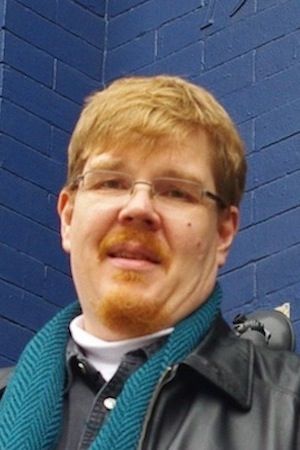
Adjunct Space Science Researcher, National Center for Earth and Space Science Education
Senior Scientist, Arctic Slope Technical Services
Originally from Finland, Harri received his Ph.D. in astronomy from the University of Oulu. Harri has worked in various research and education organizations in the Unites States for 20 years. He is a Senior Scientist at Arctic Slope Technical Services, where he works with NASA’s Space Technology and Human Exploration and Operations Mission Directorates to help select new space technology projects for development and experiments for flight to the International Space Station. His science research focuses on the use of computer simulations to investigate the origin of the Solar System and the formation of stars and planetary systems across the Universe. His science education activities have included hundreds of visits to grade K-12 classrooms, conducting teacher training workshops, teaching college courses, and presentations to families and the public—he is one of the presenters for the Center’s Family Science Night program at the Smithsonian National Air and Space Museum.
43. Dr. Junior West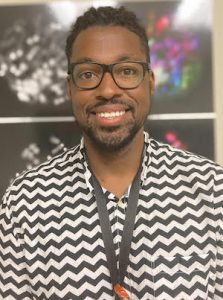
Post-Doctoral Fellow
Johns Hopkins University
Dr. West obtained his BSc and PhD in Cell and Systems Biology from the University of Toronto, where he studied cell and molecular mechanisms that govern epithelial morphogenesis using embryonic development of the fruit fly Drosophila melanogaster as his model system. His passion for understanding how epithelial tissue are able to undergo complex morphogenetic events led him to his current position as a postdoctoral fellow in the Prof. Andrew Ewald’s lab at Johns Hopkins University School of Medicine. Here he studies cellular and molecular mechanisms that are used by epithelial tubes that comprise the mammary gland as they grow and establish proper organ architecture, and how these mechanisms are disrupted during breast cancer progression. To do this he grows miniature versions of this organ – also known as organoids – in a dish!
44. Dr. Kol Zarember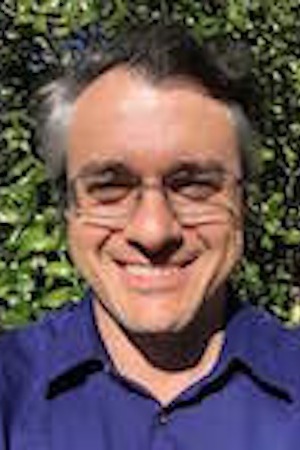
Adjunct Staff Member, National Center for Earth and Space Science Education
National Institute for Allergy and Infectious Diseases
National Institutes of Health
Kol Zarember obtained his PhD from the New York University School of Medicine and performed postdoctoral research at Genentech, Inc. before moving to the National Institutes of Health. Dr. Zarember is currently the Scientific Operations Manager of the Laboratory of Clinical Immunology and Microbiology and his research interests focus on the recognition of microbes by the human immune system and on how the innate immune system counters invasion by pathogens. Through studying patients with various rare genetic alterations in immunity, he works to better understand how neutrophils, the most abundant white blood cell in the circulation, prevent infections and contribute to other aspects of inflammation and human biology including atherosclerosis.
